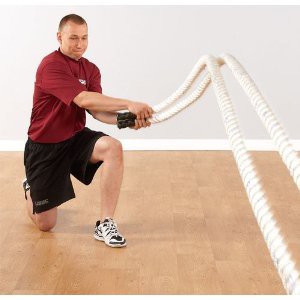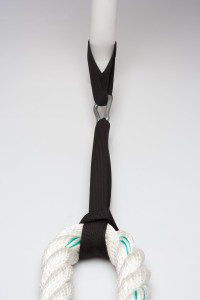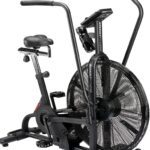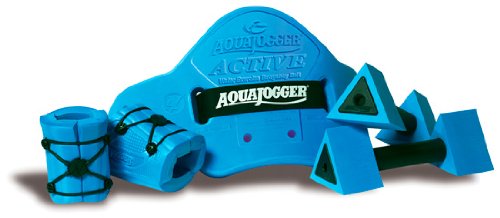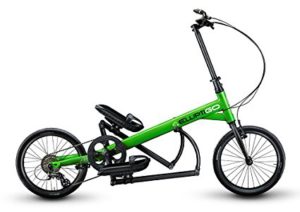Here’s How to Exercise – Including Doing Cardio – with a Hurt or Broken Foot.
This includes minimizing pain and modifying workouts if you’re wearing a boot.
Disclaimer: This page contains affiliate links, meaning we receive a commission if you decide to make a purchase through our links, but this is at no additional cost to you. Please read our disclosure for more info.
QUICK LINKS
Every day we have patients ask us how they can continue exercising when they have an injured foot or ankle. This page is a guide for anyone who has an ankle or foot injury and wants to continue exercising.
Even if you are in great shape and exercise intensely, we can help you maintain your fitness. You may have to make some changes in your activities, but we can help you find an effective way to exercise.
Discuss all of these techniques with your primary care doctor before starting an exercise program. What we are presenting here are general guidelines. Depending on your injury and your fitness, adjustments may be necessary. Now let’s look at how to best exercise with a foot injury.
What are the Most Efficient Ways to Exercise with a Foot or Ankle Injury?
First, we need to look at what most research shows to be the most effective exercises. Again this can vary depending on your exercise goals, but for burning calories, weight loss and cardiac health more and more studies are showing the following two types of exercise are the most effective:
- Aerobic Training: Zone 2 aerobic training has been shown in multiple studies to be the most effective exercise for improving lifespan and healthspan. It’s beyond the scope of this article to go into that now but we highly recommend this article from Dr. Peter Attia.
- Strength Training: Strength training is important for everyone. A regular strength training program will help you reduce body fat, increase your lean muscle mass and burn calories more efficiently. Many studies show that strength training is every bit as important as cardio exercise for weight loss and cardiac health. Strength training becomes even more important as we get older in order to prevent the muscle loss that naturally occurs as we age.
What this means is that if we can combine aerobic training with strength training then we can develop a very effective exercise program that gives you both a cardio and a weight workout and burns calories at a much higher rate than other forms of exercise. Now we need to figure out how to do this when you have a foot injury.
When you have a foot injury, you must let the tissue rest in order to heal
One of the reasons that many foot problems heal slowly is that feet rarely get a chance to rest. Even If you are trying to take it easy, you still spend a lot of time on your feet.
This is the reason that for many foot problems, the first thing we must do is to give the foot a chance to rest. We may do this with a walking boot, taping, or braces of some sort. But during the first weeks of treatment, rest of the injured limb is often critical.
Except in rare cases, such as a fracture or post-surgery, most people don’t need to be on crutches, but they may, for example, be wearing a walking boot. During these first weeks of healing we recommend no pounding exercises. For example, no running, jumping exercises or treadmill walking. Even a bike or an elliptical machine may be too much depending on your condition.
How can you get in a good workout when you have a foot injury – even if you are wearing a walking boot?
If we combine the two best types of exercise, interval training and strength training, we can develop a program that you can do that will give you a great workout yet put minimal force on your feet. Listed below are some home programs that will help you get a great workout, even if you have a foot injury.
If you work with a certified personal training at your gym, they can often help you work out a program. If you are a patient of Dr. Huppin or Dr. Hale, we are happy to talk to your trainer to discuss your program.
Exercises that can be done with little or no force on the feet (even complete non-weight bearing)
- Heavy rope training sitting in a chair
- Air Bike (model that allows arms only)
- Aqua jogging
- Elliptigo (outdoor elliptical trainer)
- Swimming
- Many portions of the DVDs listed below
- YouTube videos listed below
Exercises that can be done in a walking boot
- Heavy rope training
- Air Bike (models that allow arms only)
- Many portions of the DVDs listed below
- Upper body weight training
- YouTube videos listed below
Recommended Exercise DVDs to Use When You Have a Foot Injury
We have a put together a list of fitness DVDs that can be used to develop a training program that will get your heart rate up and help you burn calories and maintain fitness. Be sure to talk to your doctor before starting any exercise program. If you have been diagnosed with a foot or ankle injury, talk to the treating physician about this program before staring it.
Many of the DVDs we recommend put a focus on upper body weight training. If you run through the exercises fairly quickly with little break in between, you can make these strength training sessions into great interval workouts.
You have to be careful not to overload your injured foot, and you will have to make a few modifications. For example, if you are on crutches you will have do all of the exercises sitting in a chair. In that situation, skkip any that require you to be standing. If you are in a walking boot, then you can stand, but avoid doing any exercises that involve jumping or otherwise moving your feet. It’s usually ok to stand in one place, however, and do the upper body strengthening. If you are non-wieght bearing, do the following exercises while in a chair.
You want to move rapidly through the exercises to maintain an elevated heart rate. In most cases you don’t have to let a foot or ankle injury stop you from exercising.
Here are the DVDs we are recommending:
P90X – Guide to P90X Workouts to do When Your Foot or Ankle is Injured
 This program consists of 12 DVDs that provide a full body workout plan. These are not easy workouts, but they are effective. You will need some hand weights and either a pull-up bar or exercise bands Seven of the DVDs can be used for people with foot pain. We recommend the following workouts. Remember; move rapidly from exercise to exercise to make this a cardio interval workout.
This program consists of 12 DVDs that provide a full body workout plan. These are not easy workouts, but they are effective. You will need some hand weights and either a pull-up bar or exercise bands Seven of the DVDs can be used for people with foot pain. We recommend the following workouts. Remember; move rapidly from exercise to exercise to make this a cardio interval workout.
- Workout One – Chest & Back: This workout emphasizes push-ups and pull-ups. This is a great workout when you have a foot or leg injury. If you have an injury to one foot, you can put that foot on top of the other one while doing push-ups. For more of a cardio interval workout, use your remote to fast forward through breaks.
- Workout Three – Shoulders & Arms: A combination of pressing, curling, and fly movements, this routine will burn many calories. Skip the breaks to make it more of a cardio interval workout. If necessary, most of this workout can be done sitting down.
- Workout Five – Legs & Back: Skip this one if you are wearing a walking boot. If you have an injury that allows you to wear shoes, then this workout can usually be done, although we recommend skipping the two calf exercises (the ones that ask you to go up on tiptoe).
- Workout Seven – X Stretch: Avoid excessive stretch of injured areas.
- Workout Nine – Chest, Shoulders, & Triceps: Targets both large and small muscles, of your upper body. Includes presses, flys, and extensions. Much of this workout can be done while sitting.
- Workout 10 – Back & Biceps: Consists of curls and pull-ups. Another great workout that does not stress the lower extremity. Bicep exercises can be done while sitting.
- Workout 12 – Ab Ripper X: When you have a foot injury it’s a good time to work on your abs.
Bob Harper: Inside Out Method
Bob Harper, one of the trainer’s from NBC’s Biggest Loser show, has several excellent DVDs that are extremely effective workouts. Most of the ones we recommend are in his “Inside Out” series. These also tend to be very inexpensive DVDs. With just a little modification, they can provide a great workout for someone with a foot, ankle or leg injury.
 Bob Harper: Pure Burn- Super Strength
Bob Harper: Pure Burn- Super Strength
This is an excellent total body workout. Those of you with a foot injury will want to either skip or substitute about 30% of this 60 minute workout. He often will have you doing lower body work at the same time as upper body. Focus more on the upper body moves. Skip the “Down and Outs” and the lunges. Squats are fine for many people with foot injuries, but if it hurts, don’t do it. You can buy it here for about $10
Bob Harper: Totally Ripped Core
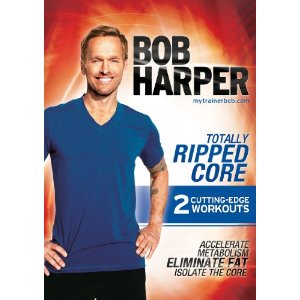 50 minutes of isolated core combinations. This is a good overall workout. If you have foot pain or injury substitute punches or planks for the following exercises:
50 minutes of isolated core combinations. This is a good overall workout. If you have foot pain or injury substitute punches or planks for the following exercises:
- Plyo Squats
- Single leg deadlifts
- Side Burpee
- Other exercises that put stress on your feet.
Totally ripped core can be found here – usually under $10.
Cathe Friedrich’s Low Impact Series: Afterburn
 While this one would be difficult to do in a walking boot, these are high intensity workouts that are low impact. Perfect when healing from a foot injury. Use this workout in its entirety as you are working back toward your normal activity. If you are wearing a walking boot, skip the cardio portions and only do the metabolic weight training (she alternates between the two). Available here for just under $25.
While this one would be difficult to do in a walking boot, these are high intensity workouts that are low impact. Perfect when healing from a foot injury. Use this workout in its entirety as you are working back toward your normal activity. If you are wearing a walking boot, skip the cardio portions and only do the metabolic weight training (she alternates between the two). Available here for just under $25.
Best Options for Home Cardio with an Injured Foot
There are several options available for cardio exercise when you have an injured foot or ankle. We have found two that work for the widest variety of people and the widest variety of injuries.
Our goal is to find cardio exercise that you can do sustainably even in cases where you cannot put weight on your foot or you are wearing a walking boot. The two exercises we recommend for most of our patients are:
- Battle Rope Training (Heavy Ropes)
- Air Bike with Upper Body Only Option
Heavy Rope Training (Battle Ropes)
A Great Cardio Workout You Can do Standing in Boot or Even While Sitting

Heavy rope (or battle rope) training is one of the best cardio workouts to do when you have a foot injury. It consists of holding onto both end of a heavy rope (one end in each hand).
Most Heavy Ropes are very long and have to be anchored in the middle. We recommend a model that doesn’t require the anchor.
Weighted Heavy Rope – Shorter and No Anchor
The Heavywear Battle Rope is our recommended battle rope. It has several advantages over standard battle ropes. Those include:
- It is weighted in the middle. This keeps it stable without the need for an anchor at the middle of the rope
- The weighted rope allows the use of a much shorter rope so that it can be used in much smaller spaces – including indoors.
If you get a standard battle rope, you will need about 50 feet of 1.5 or 2 inch rope. These standard battle ropes can run between $40 and $150 depending on the length and thickness. It is, however, one of the best workouts for those with a foot injury and you will likely want to include it in your exercise routine when you are healed.
There are many battle rope exercises you can do to ramp up your cardio and build your core strength. Some of the exercises include waves, slams, throws, spirals and whips. All involve swinging your arms up and down (or side to side) in some manner for timed intervals.
One of the great things about heavy rope training is that you can do it sitting down! This makes it a great exercise choice for even those with fairly severe foot injuries.
This rope is a good one at a good price. You will need something to anchor it to (a pole, post, tree, fence or a friend).
The video below shows 12 exercises you can do either sitting or standing. Watch the right upper corner of the video for sitting exercises.
We also recommend a “battle rope anchor” to hold the rope stable for your workout.
Video: 12 Battle Rope Exercises You Can Do Sitting Down or Standing
Air Bike with Arms Only Option 
This is one of our favorite methods to get a great cardio workout when you have a foot injury.
Air bikes like the AssaultFitness Assault AirBike Classic have a set of foot-rests that allow you to use your arms only. When you are healed it makes for a great exercise bike as it also has regular pedals.
Air bikes are also easy on the knees and back (due to the rider’s upright posture). While not inexpensive, they are a good value for the money when compared to other types of exercise equipment of similar quality.
A quality air bike that will last you for years will run in the $800 range.
Pool Running (Aqua Jogging)
Pool running or Aqua jogging is an excellent method to maintain and gain fitness when you have a lower extremity injury. Runners in particular will find pool running great for maintaining fitness levels.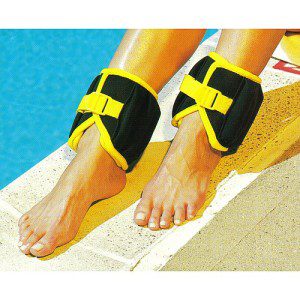
An Aqua Jogger like this one will help you do pool-running.
You will also want to use aqua ankle weights to help with the jogging motion
Video: How to Properly do Pool-Running
ElliptiGO (Outdoor Elliptical Trainer)
Elliptical cycling combines the best of cycling, running and elliptical training. It is a fun and effective outdoor workout. You can see a selection of ElliptiGo trainers here.
CrossFit Workouts for Those with Foot Injuries
There are many crossfit workouts of the day that are great for people looking for an intense workout that won’t put too much stress on your feet One of my favorites is the Cindy. Cindy consists of a 20 minute workout alternating:
- 5 pull-ups
- 10 push-ups
- 15 body weight squats
Do as many sets as you can in 20 minutes If you are in a boot, substitute bicycle abs for the body weight squats.
There are a number of other CrossFit WODs that can be done if you are suffering from foot or leg pain. Many others require only some modification to make them doable.
Hurt Foot or Hurt Ankle Workout Videos on YouTube
We have found some great videos on YouTube showing workouts that can be done with an injured foot or ankle. First, Fitness Blender has a great workout for anyone who has trouble standing.
Next, Caroline Jordan has a great video showing a number of exercises that can be done while putting no force on the foot or ankle. It’s pretty short but you can run through this video several times for a complete workout. Better yet, combine it with the second video below showing Heather Frey working out after her own foot injury.
Most of these videos are a bodyweight strength workouts. We recommend combining them with a true cardio workout such as those using battle ropes, or an air bike as noted above.
Video: Total Body Chair Workout from Fitness Blender
We love Fitness Blender and use them for our own workouts. This total body workout is perfect for anyone with a foot injury that makes standing difficult.
Video: Working out with a foot or ankle injury
Heather Frey experienced a serious foot fracture called a Lisfranc’s injury. She is on is on crutches and in a walking boot and is not allowed to bear any weight at all. Here she shows that you can still get in an advanced workout even with serious foot and ankle injuries and while wearing the walking boot and having to be completely non-weight bearing!
Video: Working out with a broken foot and having to be non-weight bearing
40 minute Workout in a Chair for Those with Injured Feet and Ankles
30 Minute Workout with a Broken Foot and Wearing a Boot
